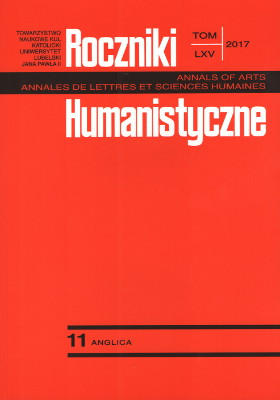The Renaissance Melancholy Assemblage, Space, and the Baroque Problem of Thought
The Renaissance Melancholy Assemblage, Space, and the Baroque Problem of Thought
Author(s): Kamil RusiłowiczSubject(s): Language and Literature Studies, Studies of Literature, Other Language Literature
Published by: Towarzystwo Naukowe KUL & Katolicki Uniwersytet Lubelski Jana Pawła II
Keywords: melancholy; space; assemblage; Deleuze and Guattari; Hamlet; neobaroque
Summary/Abstract: The article discusses Drew Daniel’s theory of the melancholy assemblage. By juxtaposing Daniel’s appropriation of Deleuze and Guattari’s ideas with Manuel De Landa’s discussion of the assemblage theory, it addresses the issue of space which, in spite of being one of the parameters of an assemblage, is absent from Daniel’s The Melancholy Assemblage. Therefore, the first question asked in the present article concerns the reason behind Daniel’s neglect of the spatial dimension of an assemblage. The second issue discussed in the article concerns the tension between forces of territorialization and deterritorialization in a melancholy assemblage. By approaching the issue from the vantage point of the neobaroque theory, the article argues that Daniel’s Renaissance melancholy assemblages already touch upon the problematic relation between performance and essence that would find its full manifestation during the Baroque.
Journal: Roczniki Humanistyczne
- Issue Year: 65/2017
- Issue No: 11
- Page Range: 147-170
- Page Count: 14
- Language: English

